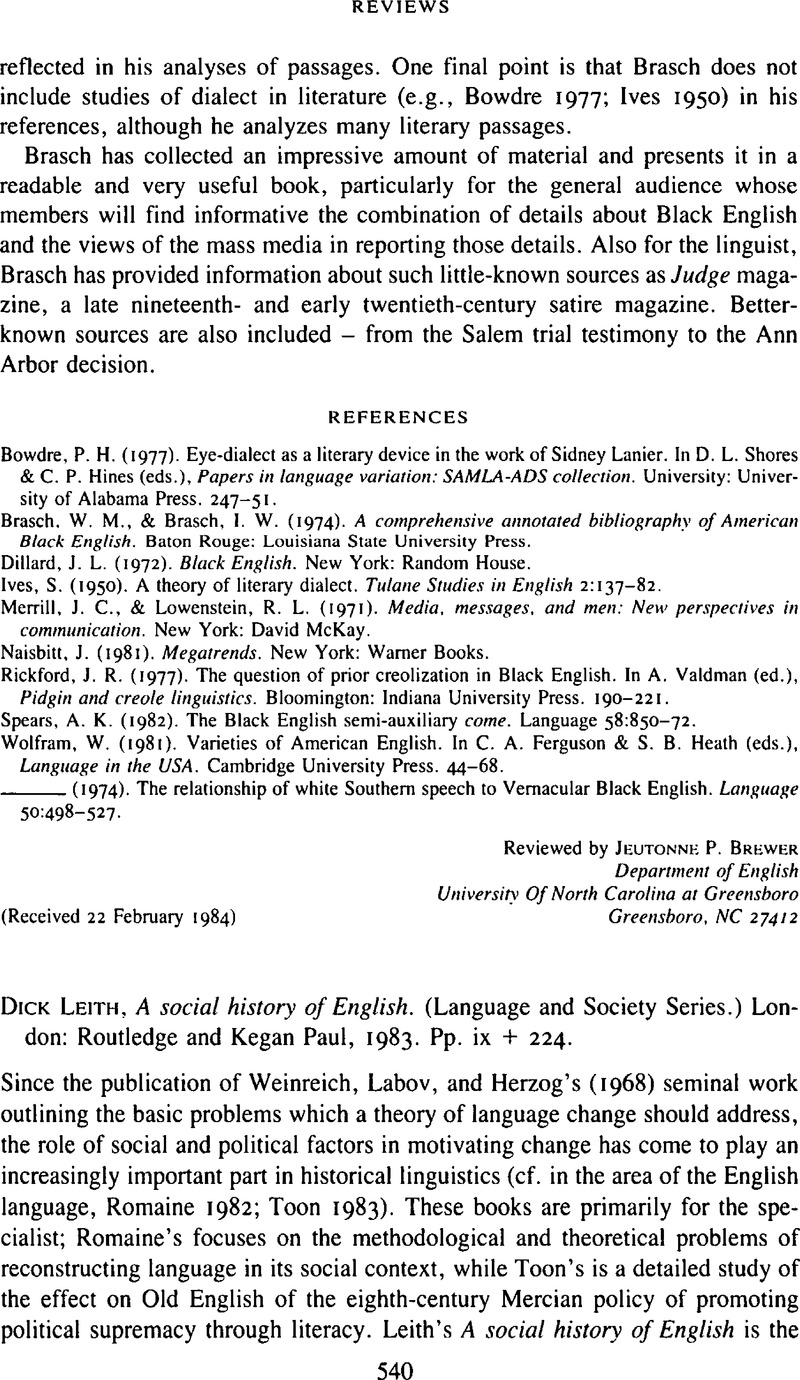No CrossRef data available.
Article contents
Dick Leith. A social history of English. (Language and Society Series.) London: Routledge and Kegan Paul, 1983. Pp. ix + 224.
Published online by Cambridge University Press: 18 December 2008
Abstract
An abstract is not available for this content so a preview has been provided. Please use the Get access link above for information on how to access this content.

- Type
- Book Review
- Information
- Copyright
- Copyright © Cambridge University Press 1984
References
REFERENCES
Anttila, R., & Brewer, W. A. (1977). Analogy:A basic bibliography. Amsterdam and Philadelphia: John Benjamins.CrossRefGoogle Scholar
Bolinger, D. (1980). Language — the loaded weapon: The use and abuse of language today. New York: Longman.Google Scholar
Bolton, W. F. (1982). A living language: History and structure of English. New York: Random House.Google Scholar
Chafe, W. L. (ed.) (1980). The pear Stories: cognitive, cultural and linguistic aspects of narrative production. Norwood, N.J.: Ablex.Google Scholar
Finegan, E. (1980). Attitudes toward English usage: A history of the war of words. New York: Teachers College Press.Google Scholar
Fish, S. (1980). Is there a text in this class? The authority of interpretive commentary. Cambridge, Mass.: Harvard University Press.Google Scholar
Labov, W., & Waletsky, J. (1967). Narrative analysis: Oral versions of personal experience. Essays on the verbal and visual arts. Proceedings of the 1966 Annual Spring Meeting of the American Ethnological SocietySeattle:University of Washington Press.Google Scholar
Labov, W., Yaeger, M., & Steiner, R. (1972). A quantitative study of sound change in progress. Final report on contract NSF-GS-3287. Philadelphia, Pa.: U.S. Regional Survey.Google Scholar
Pratt, M. L. (1977). Toward a speech act theory of literary discourse. Bloomington: Indiana University Press.Google Scholar
Pyles, T., & Algeo, J. (1982). The origins and development of the English language. 3rd ed. New York: Harcourt Brace Jovanovich.Google Scholar
Richter, M. (1979). Sprache und Gesellschaft im Mittelalter: Untersuchungen zur mundlichen Kommunikation in England von dem Mittel des 11. bis zum Beginn des 14 Jahrhunderts. Stuttgart: Hiersemann.Google Scholar
Romaine, S. (1982). Socio-historical linguistics: Its status and methodology. Cambridge University Press.CrossRefGoogle Scholar
Toon, T. E. (1983). The politics of Early Old English sound change. New York: Academic.Google Scholar
Weinreich, U., Labov, W., & Herzog, M. I. (1968). Empirical foundations for a theory of language change. In Lehmann, W. P. & Malkiel, Y. (eds.), Directions for historical linguistics: A symposium. Austin: University of Texas Press. 97–195.Google Scholar




